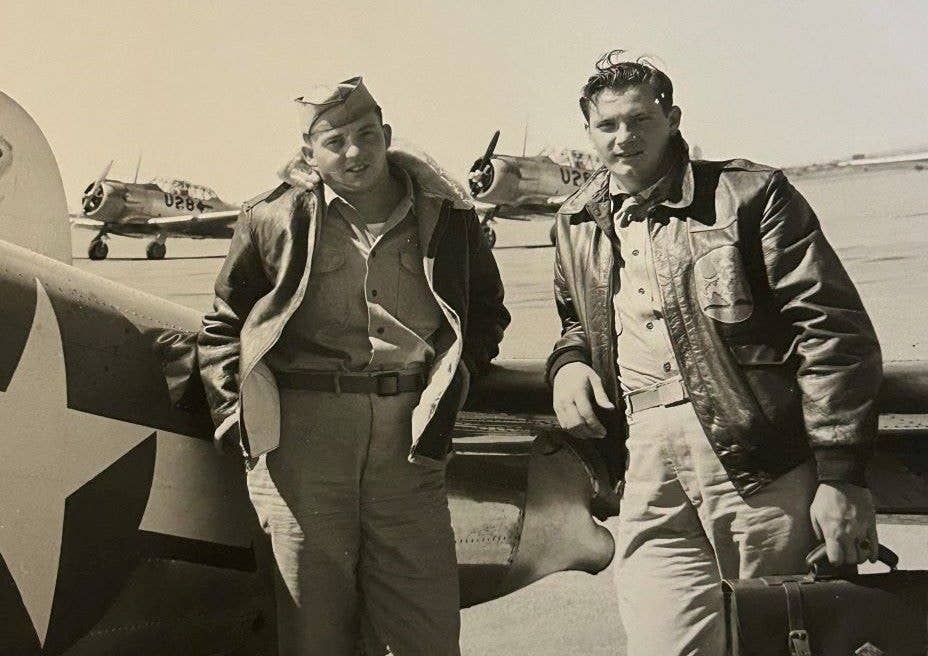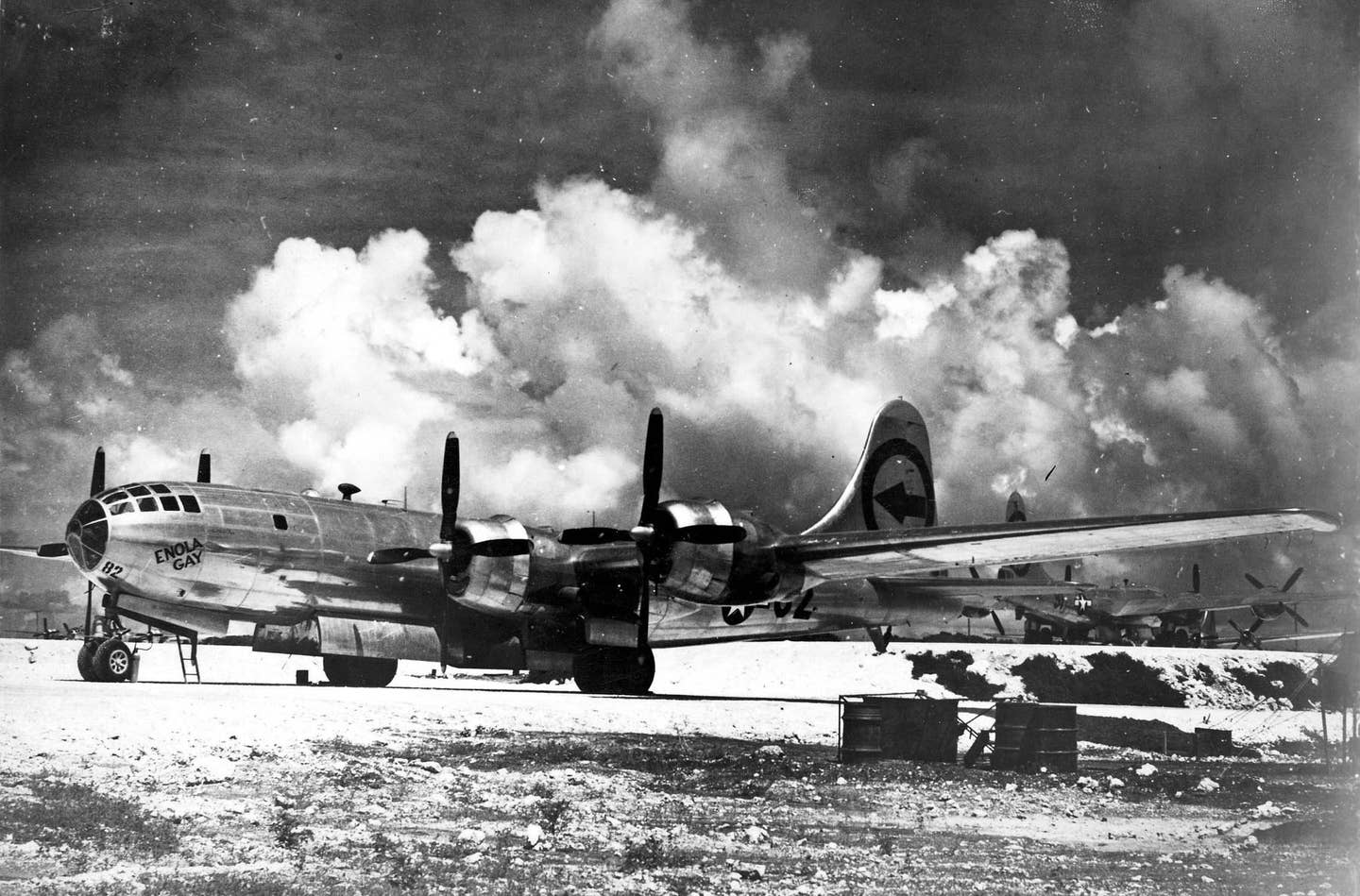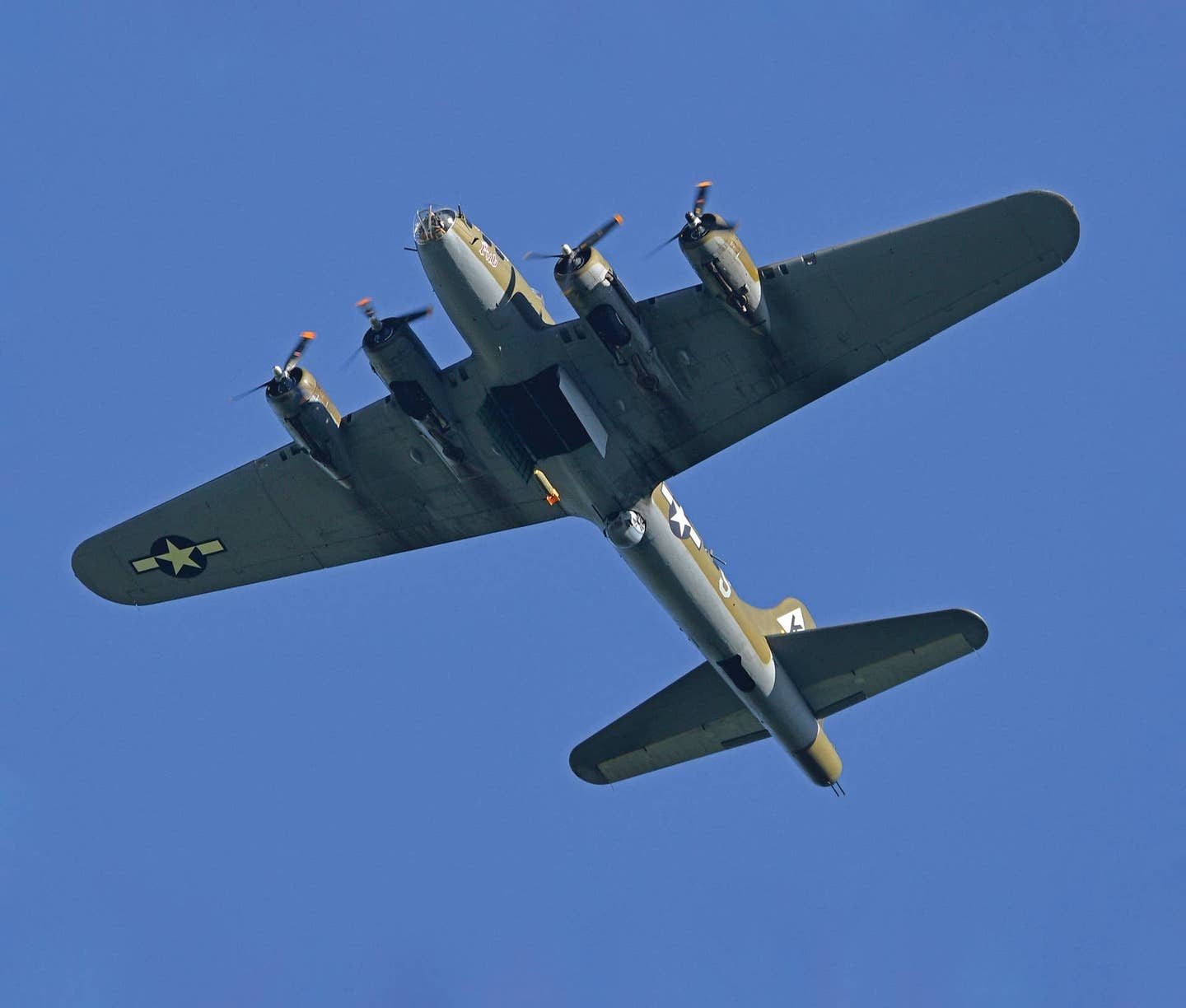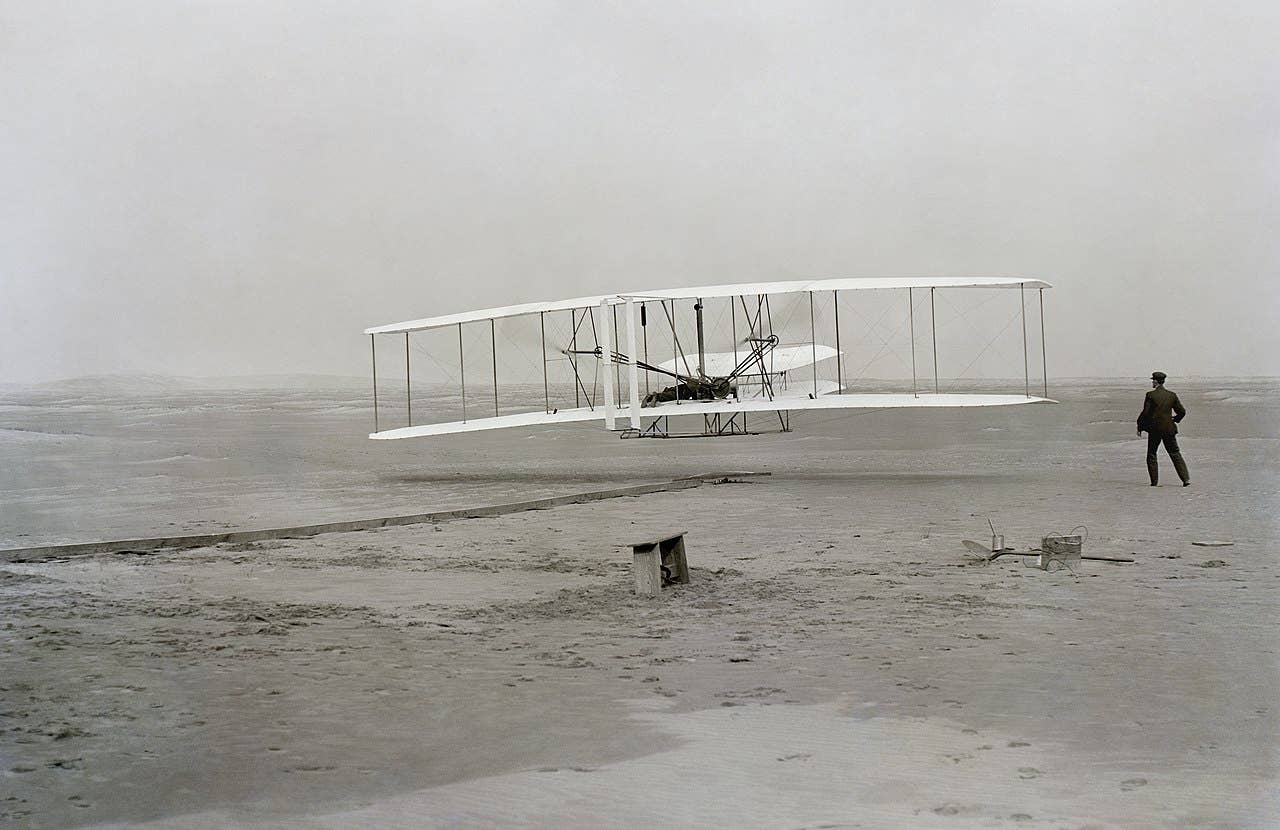Finding an Aviation Legacy Through Captain Martin’s Jacket
An old World War II-era leather pilot’s jacket presents a thread that leads to unraveling details of his career.

Jack Martin, right, wearing the A-2 flight jacket in an undated photo. [Courtesy: Anne Palmer Martin]
"I want to give you a family treasure, but only if you want it," the message from Anne Palmer Martin, a dear college friend began.
The treasure was a World War II-era A-2 leather jacket that belonged to Jack L. Martin, her father-in-law. She never knew him. He died when his son Bob—Anne's husband—was 13. The jacket had been worn once or twice by Bob, who passed away a few months ago. For the most part, according to Anne, it has been in a closet for more than 20 years.
"I don’t know what to do with it," she wrote. "I thought you might understand the history it contains? Feel free to say no."
Was she kidding? There was no way I could say no. This is more than acquiring a cool jacket for my collection. This was a chance to preserve a piece of history and help a friend learn more about a family member. I replied with an enthusiastic “yes.” A few days later, the jacket arrived in a box. Also included were airline pilot wings, cuff links (more on them later), and photographs from 1911 showing the first airplane to visit Deming, New Mexico.
The jacket, made of horsehide, was dry and stiff with age. The first order of business was to nourish and moisturize the leather to rejuvenate it. I double-checked with a friend who does jacket restoration for a living. A list of products was suggested: saddle soap, Neatsfoot oil or Cadillac Boot & Shoe Leather Lotion. I applied them liberally with clean hands and repeated those steps several times.
Please take my advice: Never store a vintage jacket on a coat hanger. Store it flat in a clean cloth bag in an airtight container.
History Lesson
Learning a jacket's history begins with the interior label. This jacket sports a label reading, "Type A-2, drawing no. 30-1415, A.A.F. (Army Air Forces) Contract."
Online sleuthing led to Acme Depot, a comprehensive A-2 website run by Marc Weinshenker, a self-described serial hobbyist who has been interested in flight jackets since 1990.
"With a particular concentration on A-2s," he said. Weinshenker collected for a time and along the way picked up a lot of information, much of it from the book The Type A-2 Flight Jacket Identification Manual by Gary Eastman. This book is the gold standard for the jacket collector. According to the numbers on the label, this jacket was made by Cable Raincoat Company in Boston. Cable Raincoat was one of 14 manufacturers contracted by Uncle Sam to make the flight jackets during WWII.
"The contract was given to Cable Raincoat Company in 1942, and some 50,000 jackets were made," Weinshenker said.
The pilot name tag is the WWII single-line design featuring the their first and second initials and last name stamped into a strip of leather sewn on the left side of the jacket. Below it is a very faded and worn leather squadron patch. Time had not been kind to Martin’s, and the design was illegible. There are flecks of yellow, blue, and red paint in the leather circle.
Palmer Martin provided me with a black-and-white photograph of Captain Martin wearing the jacket. In the photo, he is in a military uniform. The patch was once some sort of anthropomorphized animal—I'm guessing a tiger based on what appear to be stripes—standing on its hind legs. The image is obscured by the lighting in the photograph. A man wearing a B-6 flight jacket is next to Martin, and they are standing beside an aircraft. Based on the aircraft in the background, it appears they are posed next to a North American T-6 Texan or the Navy variant, the SNJ trainer.
I consulted with a friend who restores warbirds for living, who pointed out the "U" on the fuselage of the aircraft in the background.
If the aircraft were indeed T-6s, that marking would indicate that the aircraft were based at Avenger Field in Sweetwater, Texas. Avenger Field was an Army Air Corps base and home of the Women Airforce Service Pilots (WASPs).
If, however, the aircraft are SNJs, the "U" would indicate the photo was likely taken at the airfield in Corpus Christi, Texas.
Could it be that Captain Martin taught WASPs to fly the Army way?
We could only guess. His obituary noted he was born on December 8, 1920, and that he learned to fly while still in high school at Wiley Post Airport (KPWA) in Oklahoma. He served five years in the U.S. Army Air Corps, but there were no details on where he served or when he separated from the military. He spent some time on the faculty of the University of Southern California College of Aeronautics.
In 1950, he swapped the classroom for the cockpit and became an airline pilot.
The Airline Career
Martin joined the Flying Tiger Line, one of the first cargo carriers. These wings—metal and, slightly tarnished with age—are attached with a straight pin back, the kind that puts a hole in your shirt. These wings mean commitment.
Captain Martin enjoyed an exciting career. He was the pilot operations manager of the airline's eastern division when the Flying Tiger Line was the primary contractor for the building of the Defense Early Warning Line—known as the DEW Line—from January to May 1956. The Cold War was underway and the purpose of the DEW Line was to give the U.S. an early warning of Soviet nuclear missile attacks.
"Martin flew over [400] hours within the Arctic Circle and Canada flying material and supplies to temporary landing strips where the early warning line was being constructed," his obituary said.
The gold cuff links in the box are the shape of a Boeing 707. Martin was pilot-in-command of the Boeing 707-349C, also known as the “Rockwell Polar Flight,” that flew all the way around the Earth from November 14 to 17, 1965. It was the first aircraft to fly around the world passing over both the North and South poles.
The PoleCat, as the aircraft was known, established several world records for jet transports.
For his part, Martin was awarded the International Record Achievement Award at the annual Wright Brothers memorial banquet in Los Angeles in 1966, and in 1967 he was invited to sign the Fliers' Globe of the American Geographic Society in New York.
At the time of his death in February 1970, Martin was the director of flying for the Flying Tiger Line.
I am hopeful that someone reading this story knew Captain Martin and will be able to tell us more about his aviation career. If so, you know where to find me.

Sign-up for newsletters & special offers!
Get the latest FLYING stories & special offers delivered directly to your inbox






